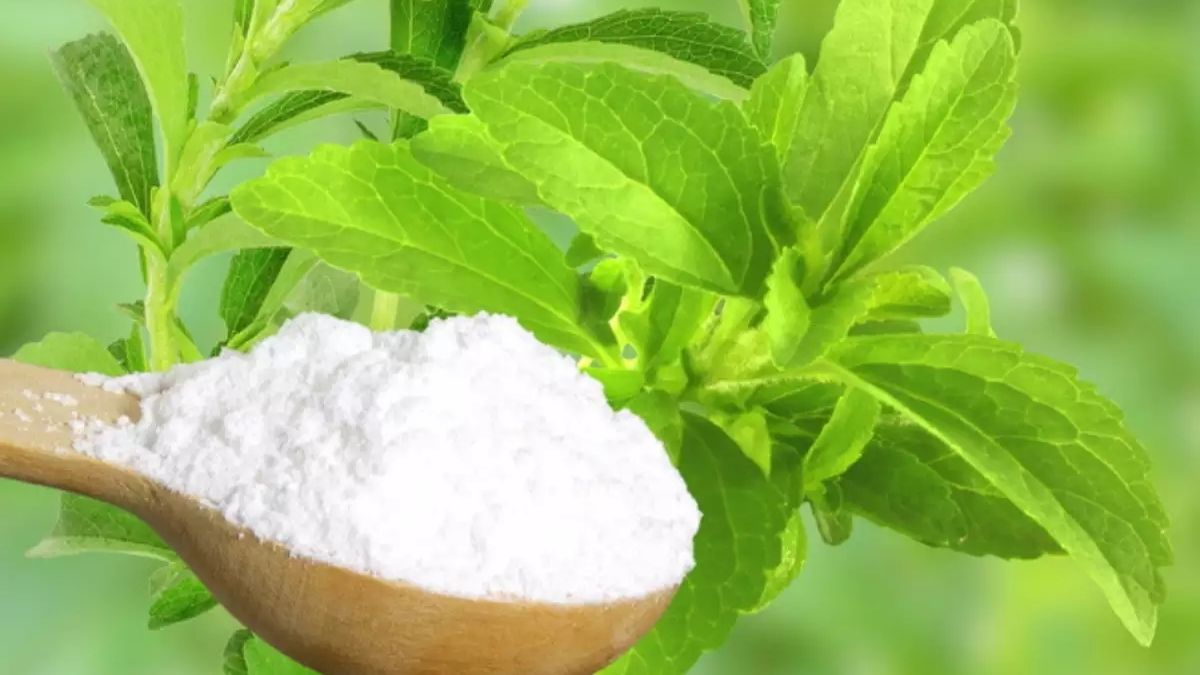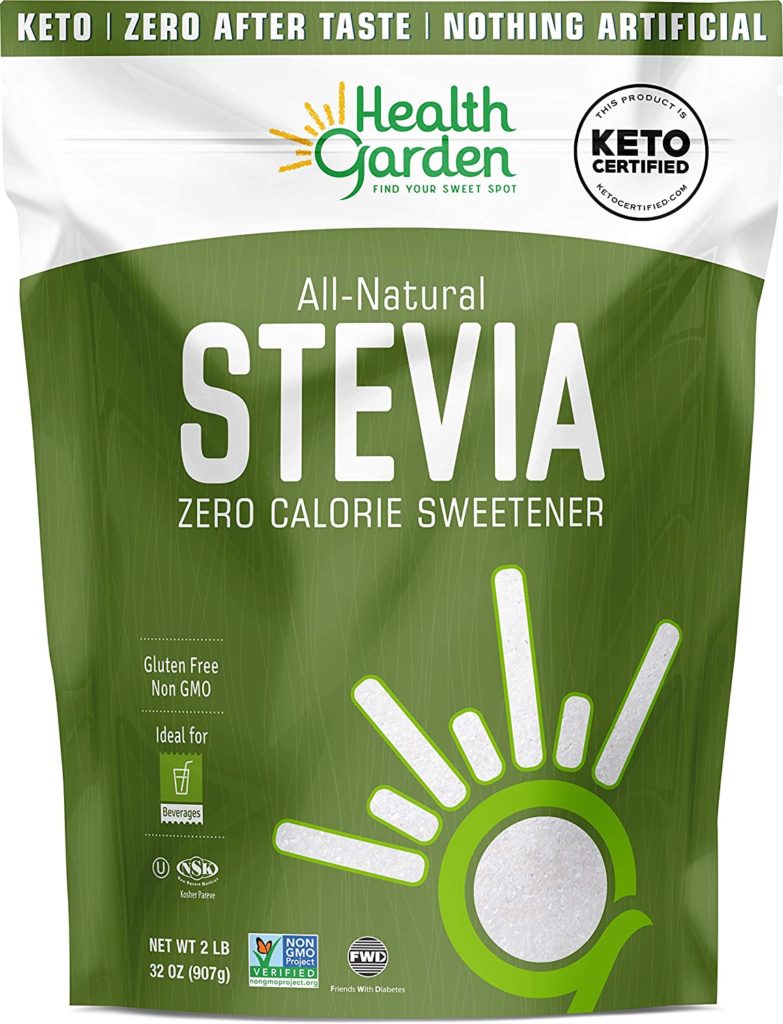You can use Stevia in many recipes. This sugar substitute is safe up to 400F and will not caramelize or brown as sugar does. You can also bake with Stevia, but be sure to bake them at a lower temperature, as baking at a higher temperature will ruin the final product. When using it in cooking, there are a few things to remember.
The main benefit of Stevia is its sweet taste. The taste is much sweeter than sugar, so you may need to add more to your dishes. Unlike sucrose, Stevia is not affected by heat or fermentation. It also has a long shelf life in typical food applications. It can be used in any recipe that requires a sweetener. It is a healthy option and is a better choice than artificial sweeteners.
What is Stevia?
Stevia is perhaps unique among food ingredients because it’s most valued for what it doesn’t do. It doesn’t add calories. Unlike other sugar substitutes, Stevia is derived from a plant. There is some question about its effectiveness as a weight loss aid or a helpful diet measure for diabetics. The stevia plant is related to the daisy and ragweed because it is in the same family.
Candyleaf is the name of a group of stevia plants that are native to New Mexico, Arizona, and Texas. But the prized species, Stevia rebaudiana (Bertoni), grows in Paraguay and Brazil. For hundreds of years, people have been using the leaves of the stevia bush to sweeten food.
Moises Santiago Bertoni, an Italian botanist, is often given credit for finding Stevia in the late 1800s, even though the Guarani people had used it for hundreds of years before. The native people called the plant kaa-he” a “sweet herb.” The leaves of the plant could be used for many things. In traditional medicine in these parts of the world, Stevia was used to treat burns, colic, and stomach problems. It was also sometimes used to stop pregnancy. People also chewed on the leaves by themselves as a sweet treat.
Stevia is sweet because of the compounds in the plant’s leaves. These compounds can be removed from the leaves by soaking them in water. Steviol glycoside comprises two main parts in the sweet extract: Rebaudioside A and Stevioside. There are a lot of flavonoids and terpenes in Stevia. Steviol glycosides are partially broken down in the body, stomach, and small intestines. Stevia is used in jams, soft drinks, ice cream, cakes, desserts, dairy products, alcoholic drinks, and many other foods and drinks.
What Type of Stevia should I Buy?
High-purity stevia leaf extract, which is 200–350 times sweeter than sugar, is usually approved for use in foods and drinks and can be used to cook at home. Because of this, Stevia is usually mixed with other things like sugar alcohols, dextrose (a mild sweetener made from corn), or plant fibers like inulin or cellulose. Without blending, it would be hard for home cooks to measure the very small amounts of Stevia that most recipes call for.
Stevia is usually sold in “spoonable” packages with the same amount of sugar as one “spoonable” package and in single-serve packets. The packets are an easy way to add sugar to coffee or tea. Spoonable Stevia is great when you need to use a lot of it, but many recipes will also tell you how many single-serve packets you need.
More recently, products have come out that mix stevia with sugars like white sugar, brown sugar, and honey. These products reduce sugar (usually 50–75%) while keeping some of the taste and functional benefits that sugar gives. The mixture of white sugar and brown sugar is great for baking. The honey blends are great in tea, and anywhere else you would normally put honey, like on fruit or yogurt.
Garden Stevia Sweetener Powder
Benefits of Stevia
- Anti-hyperglycemic: It can increase the activity of pancreatic cells, make them more sensitive to insulin, and help the body make and use insulin. It can help treat people with Type 2 diabetes.
- Anti-hypertensive: Stevioside lowers blood pressure by keeping calcium ions from entering the endothelial cells of blood vessels. This keeps blood vessels from narrowing in people with high blood pressure.
- Antioxidant: It has a lot of natural antioxidants, like apigenin, kaempferol, and quercitrin, in large amounts. These help stop damage to DNA strands, cell growth caused by angiotensin, and endothelin release.
- Anti-carcinogenic: Steviol glycoside comprises four parts: stevioside, rebaudioside A, rebaudioside C, and ducloside A. 12-0-tetradecanoylphorbol-13-acetate (TPA) causes inflammation, which is strongly stopped by ducloside A, showing that it is anti-carcinogenic.
- Stevia is antimicrobial, which means it can stop bad bacteria from growing and reproducing and stop other infections.
- Anti-inflammatory and immune-modulating, Stevia can also help reduce inflammation and boost the immune system. It stops the production of inflammatory agents in THP-1 cells stimulated by lipopolysaccharide (LPS) by getting in the way of the I-Kappa-B kinases (IKK-beta) and Kappa B signaling pathways.
Medicine: The Medicinal Effects of Stevia Include:
- Cardiovascular activity: Stevia’s cardiotonic effect helps improve the way the body’s circulatory system works when it is used for a long time.
- Digestive tonic: Stevia helps keep your appetite and improve your digestive system.
- Dermatological activity: Stevia is considered good medicine for treating acne, seborrhea, dermatitis, eczema, and wounds without leaving a scar. Using Stevia regularly also makes the skin feel better and keeps it from sagging.
How to Use Stevia in Beverage?
Stevia is often used to sweeten coffee and tea, which is easy to do with single-serve packets. In many countries, more than half of adult people drink coffee or tea every day. Most people add some sweetener, milk or cream, or both, adding an average of 69 calories to their daily intake.
1 During a day, many people who drink a lot of coffee and tea use up their entire recommended daily amount of added sugars, which is no more than 5–10% of total calories (about 6-12 teaspoons). 2 This is especially true for people who drink blended coffee drinks, which can have more than 25 teaspoons of sugar added.
Stevia is a good alternative to sugar used in coffee and tea, and it tastes like sugar and dissolves quickly in hot and cold drinks. Stevia is also a great addition to smoothies, non-alcoholic drinks that are refreshing, and drinks with alcohol.
Here are Some Beverage Recipes you may want to try:
- This black and white spiced coffee tastes like it’s from your favourite gourmet coffee shop without all the sugar
- Here is a low-sugar version of a fantastic strawberry banana breakfast smoothie
- Hot days call for some refreshing low, sugar fresh squeezed raspberry lemonade
- And don’t forget to replace sugar in your favorite alcoholic drinks like this classic French champagne cocktail
How to Cook and Bake with Stevia?
Most recipes for cooking and baking can use Stevia to replace some or all of the sugar. Most pure stevia leaf extracts are already mixed with other things, so you don’t have to worry about adding extra things like applesauce, yogurt, or egg whites, usually added when sugar is replaced. To make things easier, many companies offer online recipes that are made to taste great when Stevia is used.
Stevia for cooking is a great way to reduce calories and avoid the aftertaste of table sugar. It has about double the sweetness of sucrose while weighing less than half the amount. You can use a half-tsp of Stevia to replace one tsp of regular table sugar. It is safe for baking and cooking because it contains no manufactured sugar alcohols. The drawbacks of Stevia are that it is more expensive than sugar.
Stevia is good for cooking and baking in many ways. Unlike many artificial sweeteners, Stevia doesn’t change when heated at high temperatures. Stevia can also make sugar, honey, molasses, and other sweeteners taste sweeter when mixed with it. You might also find that Stevia makes other ingredients, like vanilla and chocolate taste better.
Stevia works great to replace all of the added sugar in a lot of different kinds of recipes. Stevia tastes great in baked oatmeal or pancakes for breakfast, and it is a great choice for puddings and homemade frozen desserts that need to be creamy. Stevia can also replace the hidden sugars in foods like salad dressings, sauces, sides, and main dishes.
When baking, it’s best to mix Stevia with sugar. Generally, most sweet baked goods recipes should have at least 1/4 cup sugar. Since Stevia doesn’t turn brown as sugar does, a small amount of sugar is needed. Sugar also helps many baked goods, like cookies, have a crisp texture. Stevia can’t be used instead of the little sugar needed to get yeast to work in baked goods with yeast, like bread.
Here are Some Baking Recipes you may want to try:
- These contain less than half the sugar of full-sugar chocolate chip cookies
- Oatmeal apple muffins are a perfect sweet treat for fall
- Enjoy the taste of traditional pumpkin chiffon pie while cutting back on sugar and calories
- Enjoy your favorite summer fruits with this strawberry rhubarb tart
How to Select and Store Stevia?
You can buy Stevia as a separate ingredient that you can add to your food at home, and you can also find it in sodas, juices, yogurt, baked goods, gum, and sweets, among other foods and drinks. If you want to buy Stevia at home, you have two main options: powdered or granulated Stevia that comes in packets or liquid Stevia that comes in bottles or droppers.
You can also find it in products that mix Stevia and other ingredients, such as erythritol (sugar alcohol). Some blends also have dextrose and inulin in them. These help people cook and bake with Stevia without having to use confusing conversion charts. You might also find brands that use a mix of Stevia and regular sugar to lower the amount of sugar.
Here’s a Look at How Long a Few Types of Stevia can Stick Around:
- Stevia in the Raw: Four years from the date of manufacture (17)
- Truvia Natural Sweetener: Three years from the date of manufacture
- Wholesome Organic Stevia Blend: Three years (19)
Conclusion
Stevia comes in liquid and powdered forms. Many chefs use the liquid form when baking, as it’s easier to measure. The liquid is sweeter than powder, so using a stevia conversion chart is essential. One teaspoon of powdered Stevia is equivalent to one cup of sugar. It’s also important to note that Stevia does not caramelize when mixed with food, making it ideal for use in baking. You can use the sugar substitute for cooking instead of white or brown sugar. If you don’t have access to brown sugar, you can also use blackstrap molasses.
It’s a great 1:1 sugar substitute. And it contains zero calories per serving. However, be careful about reducing the amount of erythritol in your recipes, as it has a minty taste. You should know a few things before using Stevia in your cooking recipes. Since Stevia can break down at higher temperatures, you should bake your dishes at lower temperatures. Otherwise, the final product will not turn out right. The best way to determine if your baked goods are ready is to insert a toothpick. If the toothpick comes out wet, the baking time is not yet right.



